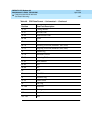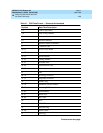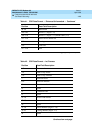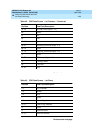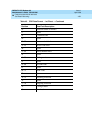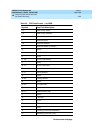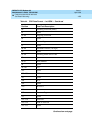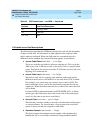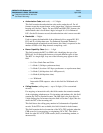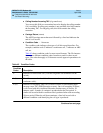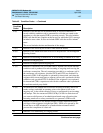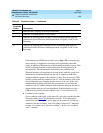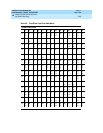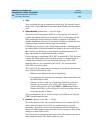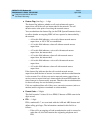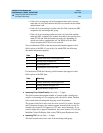
DEFINITY ECS Release 8.2
Administrator’s Guide
555-233-506
Issue 1
April 2000
Features and technical reference
1255Call Detail Recording
20
■ Authorization Code (auth-code) — 4–13 digits
This field contains the authorization code used to make the call. For all
formats except the custom format, codes longer than 7 digits are truncated,
keeping only the first 7 digits. For non-ISDN and ISDN LSU formats, the
authorization code is fewer than 6 digits in length. It is 5 for Enhanced
LSU. On the 59-character record, the authorization code is never recorded.
■ Bandwidth — 2 digits
Used to capture the bandwidth of the wideband calls to support H0, H11,
H12, and N x 64 kbps data rates. For Enhanced Expanded, Enhanced
Unformatted and customized record formats, this value is expressed as the
number of DSOs of 64 Kbps channels comprising a call.
■ Bearer Capability Class (bcc) — 1 digit
This field contains the BCC for ISDN calls, identifying the type of an
ISDN call. It will distinguish between voice and different types of data.
The BCC is a single digit. Any one of the following may appear in this
field.
— 0 = Voice Grade Data and Voice
— 1 = Mode 1 (56 kbps synchronous data)
— 2 = Mode 2 (less than 19.2 kbps synchronous or asynchronous data)
— 3 = Mode 3 (64 kbps data for LAPD protocol)
— 4 = Mode 0 (64 kbps data clear)
— w = Wideband
Intraswitch CDR outputs a value in this field for Wideband calls
only.
■ Calling Number (calling-num) — up to 10 digits (15 for customized
records)
For outgoing or intraswitch calls, this field contains the extension number
of the originating telephone user. For incoming and tandem calls, this field
contains the TAC in standard formats. The fifth digit is the first digit of a
5-digit dialing plan. In formats where the field is less than 7 digits, this also
shows the TAC of the incoming call.
This field shows the calling party number in Unformatted or Expanded
records. If the CPN is not available, this field is blank for both formats.
This field contains the local extension of the NCA-TSC endpoint when the
CDR record is for an outgoing (or originating) NCA-TSC. This field is
blank for other NCA-TSC CDR records (that is, terminating, tandem, or
unsuccessful).



